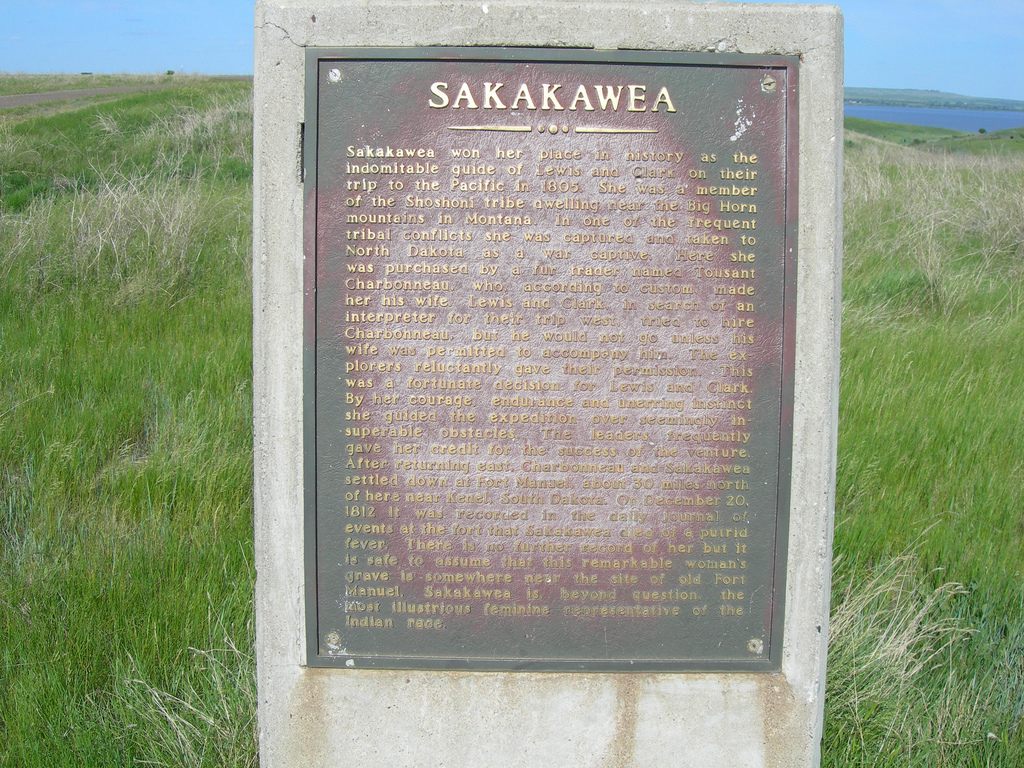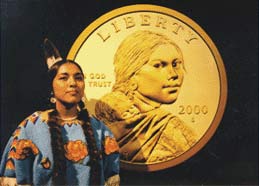Sakakawea (Sacajawea) Marker located at the Sitting Bull Grave overlooking the Missouri River across from Mobridge, South Dakota. Photo by Jimmy Emerson, DVM / Flickr (noncommercial use permitted with attribution/no derivative works).
Inscription
Sakakawea won her place in history as the indomitable guide of Lewis and Clark on their trip to the Pacific in 1805. She was a member of the Shoshoni tribe dwelling near the Big Horn mountains in Montana. In one of the frequent tribal conflicts she was captured and taken to North Dakota as a war captive. Here she was purchased by a fur trader named Tousant Charbonneau, who according to custom made her his wife. Lewis and Clark, in search of an interpreter for their trip west, tried to hire Charbonneau, but he would not go unless his wife was permitted to accompany him. The explorers reluctantly gave their permission. This was a fortunate decision for Lewis and Clark. By her courage, endurance and unerring instinct she guided the expedition over seemingly insuperable obstacles. The leaders frequently gave her credit for the success of the venture. After returning east, Charbonneau and Sakakawea settled down at Fort Manuel, about 30 miles north of here near Kend, South Dakota. On December 20, 1812 it was recorded in the daily journal of events at the fort that Sakakawea died of a putrid fever. There is no further record of her but it is safe to assume that this remarkable woman's grave is somewhere near the site of old Fort Manuel. Sakakawea is beyond question the most illustrious feminine representative of the Indian race.
Location
Sakakawea Marker is located at the Sitting Bull Grave overlooking the Missouri River across from Mobridge, South Dakota.
SACAJAWEA GOLDEN DOLLAR: Wyoming designated the Sacajawea golden dollar as the state coin.


